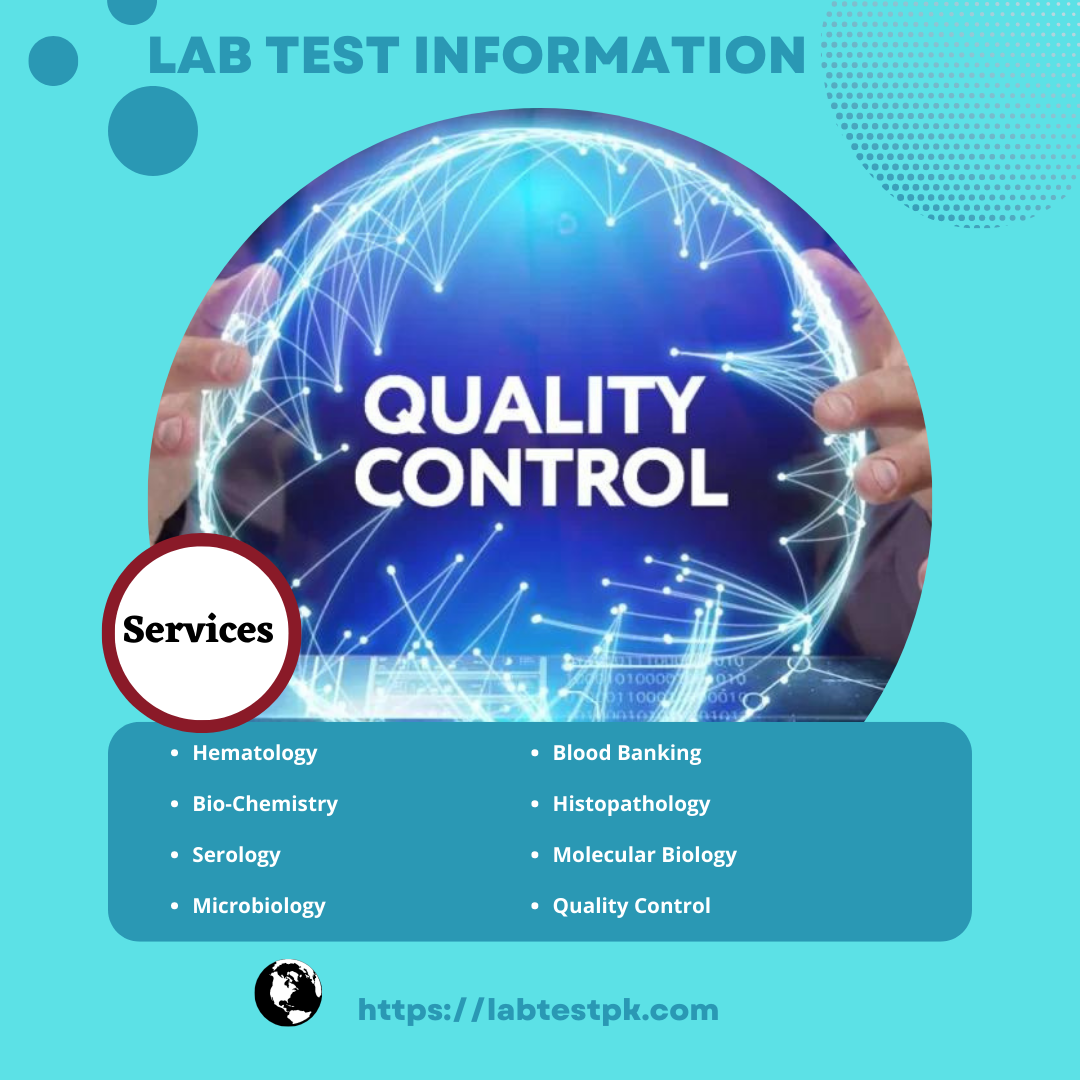Bio Chemistry Quality Control
Bio Chemistry Quality Control, A biochemistry laboratory is a sensitive place if there is diagnostic work for disease prevention and treatment, it is also important that the work is of a quality standard. Your carelessness can make a difference in the quality of the work and if the quality of the work varies, it can affect the results, so it is possible to take steps to keep the quality of the biochemistry laboratory at a high level. There are.
- First of all, the cleanliness of the laboratory is very important, there should be no germs for any reason, so that it does not cause any kind of malfunction.
- Laboratory workers should wear a uniform that has been sterilized while on duty.
- Hands should be washed with antiseptic solution before any intention.
- Equipment used for testing in the laboratory, tubes, petri dishes, pipettes and other equipment should be properly sterilized.
- Workers should use gloves and masks.
- No unauthorized person should enter the laboratory.
- The kit used for the tests should be standardized.
- Chemicals used for tattoos should be standardized and stored properly.
- Laboratory temperature should be maintained according to weather conditions. Incorrect laboratory temperature can affect the results.
- Laboratory doors should be opened by monkeys to keep them free from contamination.
- Eating, drinking tea, smoking should be prohibited inside the laboratory.
- Persons working in the laboratory should undergo medical examination after a reasonable period of time. No person suffering from any communicable disease should be allowed to work in the laboratory.
- The quality of the laboratory can be improved by following the above.
Sterilization:
It refers to the process of sterilization. Through this process we can sterilize anything. Sterilization means killing germs. Many items are sterilized through sterilization.

Methods of Sterilization:
There are many methods of sterilization or sterilization including heat, radiation and chemical sterilization. The six methods are as follows.
Through the Flame:
It is a method in which the object concerned, especially surgical instruments, is placed directly in the flame. These items are placed in a tray and put on fire by pouring alcohol on it. Also, an instrument is sterilized by heating it directly with a flame.
Hot Air Oven:
It is a machine which is also known as a hot air oven which is powered by electricity. Dry and hot air is generated inside it and the items placed in this machine are sterilized by the effect of this hot air. For this purpose, the machine is operated for a certain time. Many items are sterilized by this method.
Boiling Method:
In this method, the ingredients are boiled in water. This method sterilizes surgical instruments, patients, and laboratory items. For this, these items are boiled for a certain time. The device used for this purpose is in the form of a box, heated by adding water and related materials, and usually boiled for 45 minutes.
Auto Cleave:
Also known as the steam method, it uses a special device called an autoclave. In this, the items are sterilized by the effect of steam, Or a drum-shaped device which is either air or gas-powered, has two walls with a space between them, into which steam enters, and when the objects inside are exposed to the steam for a certain period. So they become sterile. Its lid is tightly closed to keep the stem inside. There is a safety valve that works automatically and releases steam as required to prevent bursting in case of pressure increase. Laboratory instruments and glassware are sterilized by keeping them inside.
Method of Radiation:
This is a very advanced method and an expensive method. Sterilization is done by the effect of radioactive rays. This process can only be done by an expert, It is done for specific purposes.
By Chemical:
Disinfection is done using many chemicals:
- The germs of the room are killed by giving fumes of sulfur dioxide, for this sulfur is put in a pan and burnt.
- Disinfection is also done with chlorine. It is also used to disinfect water.
- Disinfection is also done with formaldehyde. It is also used for Room. It is prepared by mixing potassium permanganate and formalin.
- Carbolic acid is a poisonous drug but it is an excellent antiseptic. Its 5% solution kills germs. It is used on floors in rooms and bathrooms.
- Cresol is an antiseptic liquid. It is also used in drains and bathrooms.
- Izol is a topical disinfectant. Its 50% solution is used. Soaking clothes in it kills its germs.
- Potassium permanganate is also known as well medicine. Putting it in the well kills its germs.
- Soap also acts as a disinfectant. Washing your hands with it kills the germs present there.
- Disinfection is also done with many antiseptic solutions like spirit alcohol, iodine acriflavine, Dettol etc.


[…] Read More […]
[…] the transport of blood from one place to another when blood is centrifuged in this tube and the gel makes a barrier between red blood cells and serum. It can easily transport this sample in this […]